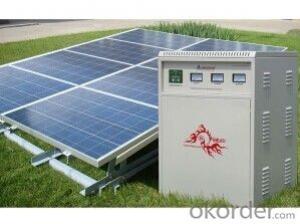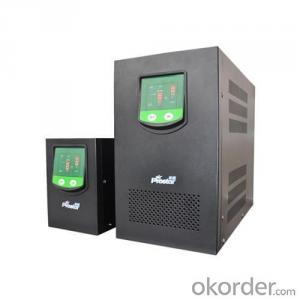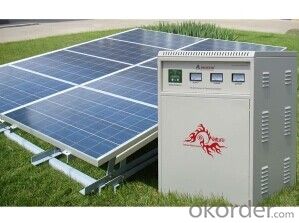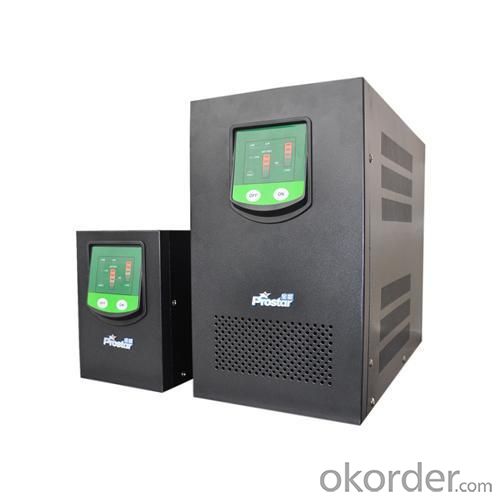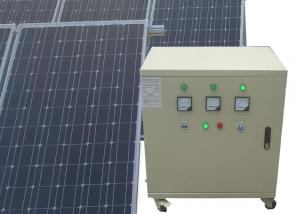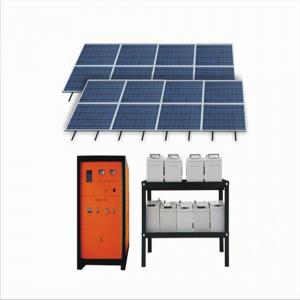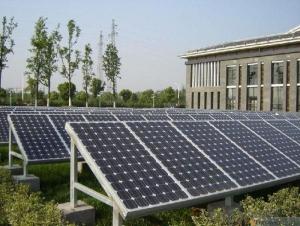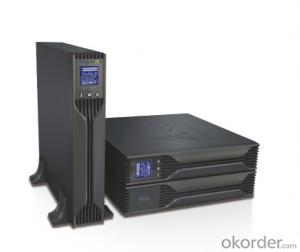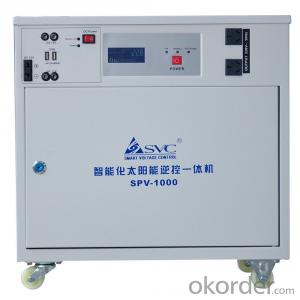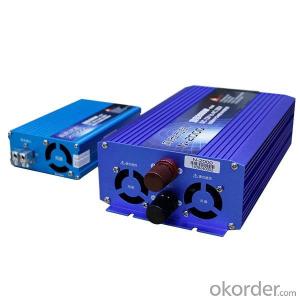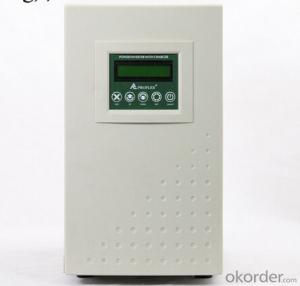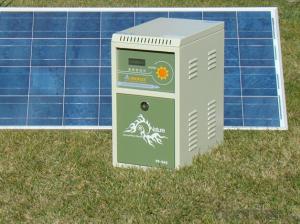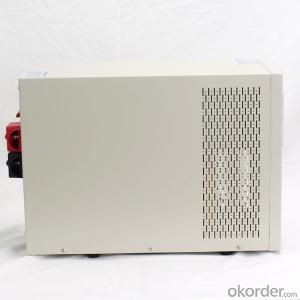Greenhouse Solar Energy Systems:Off Grid Solar Power System PR-SAS2000 with Battery Tank 1600W
- Loading Port:
- Tianjin
- Payment Terms:
- TT OR LC
- Min Order Qty:
- 10 pc
- Supply Capability:
- 10000 pc/month
OKorder Service Pledge
OKorder Financial Service
You Might Also Like
Specification
Specifications
1.Supply 2 work modes: to save electricity bill or to supply long time power backup.
2. Supply battery tank,high integrated.
1- Heat Sink: Aluminum heat sink to dissipate controller heat.
2- LCD: Display the status and data.
3- Battery LED indicator: Three states of battery LED indicator show charging status.
4- Charging LED indicator: Indicate that the battery is charging or not.
5- Fault LED indicator: Indicate that controller faults.
6- Buttons: Browse or modify all parameters.
7- RS-232 port: Monitor controller by PC and update controller software.
8- RS-485 port: Monitor controller by PC and update controller software.
9- RTC battery: Power to RTC, battery model is CR2032.
10- Remote Temperature Sensor port(MC1.5-5.08-2L)
Connection for a RTS (Remote Temperature Sensor, optional) to remotely monitor battery temperature.
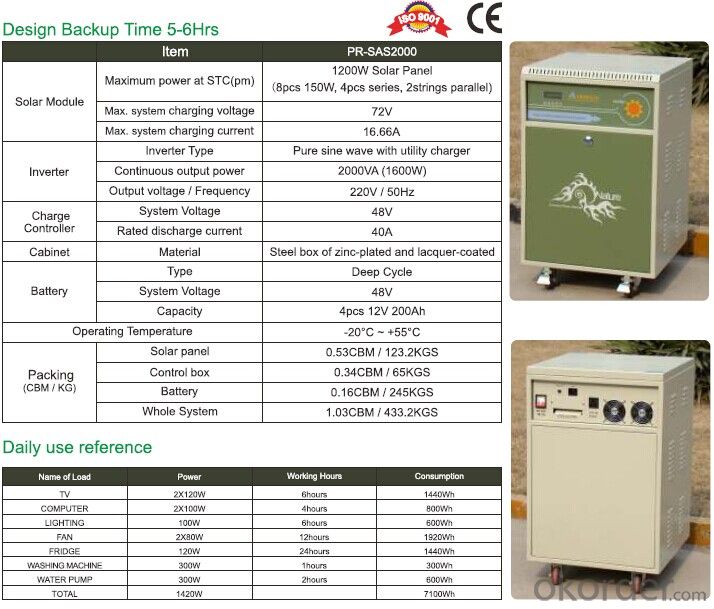
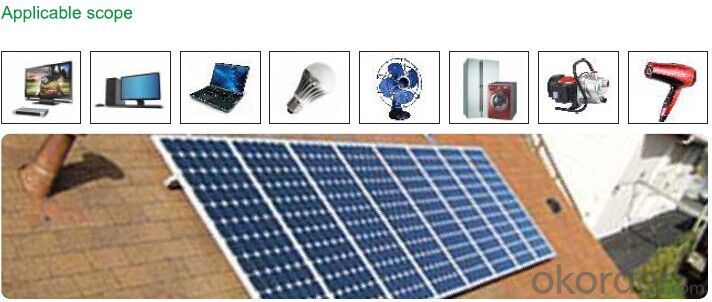
FAQ
1. How do I decide which system is right for me ?
For protection from long outages, include a generator or solar panels in your Must solar system. Shorter outages can be handled by a battery-only system.
2. Where my system will be installed ?
Must solar systems are usually wall-mounted near a home's main electrical (circuit breaker) panel.
3. How do I install my system ?
A solar backup inverter is connected to a home electric system , we will supply detailed installation manual and videos for our customers .
- Q: Can solar energy systems be used in areas with high levels of seismic activity?
- Yes, solar energy systems can be used in areas with high levels of seismic activity. However, additional precautions and engineering considerations need to be taken into account during the design and installation process. This involves ensuring that the solar panels and other components are properly secured to withstand the potential effects of earthquakes. By implementing appropriate measures, such as using flexible mounting systems and reinforcing structures, solar energy systems can be made resilient and safe in seismic-prone regions.
- Q: Can a solar energy system be installed in an area with high wind speeds?
- Yes, a solar energy system can be installed in an area with high wind speeds. However, certain considerations and precautions need to be taken into account during the installation process. It is important to choose solar panels that are designed to withstand strong winds and are properly anchored to withstand the force. Additionally, the support structures such as mounting racks or frames should be securely fastened to ensure stability. Professional installers with experience in high wind areas can design and install the system in a way that maximizes safety and efficiency. Furthermore, the orientation and angle of the solar panels may need to be adjusted to minimize wind resistance and potential damage. With proper planning and installation, solar energy systems can be successfully implemented in areas with high wind speeds, harnessing the power of the sun despite challenging environmental conditions.
- Q: Can solar energy systems be used in powering community centers or social organizations?
- Yes, solar energy systems can certainly be used to power community centers or social organizations. Solar panels can be installed on the rooftops of these buildings to harness sunlight and convert it into electricity. This renewable energy source can help reduce electricity costs and dependence on traditional energy sources, making it an environmentally friendly and sustainable option for powering community centers and social organizations. Additionally, solar energy systems can also contribute to raising awareness about renewable energy and inspire others in the community to adopt clean energy practices.
- Q: Can solar energy systems be used in powering religious institutions like churches or temples?
- Yes, solar energy systems can definitely be used to power religious institutions like churches or temples. Solar panels can be installed on the rooftops or surrounding areas of these buildings to harness sunlight and convert it into electricity. This renewable energy source can help reduce the carbon footprint of these institutions, lower their energy costs, and serve as a sustainable and environmentally-friendly solution for their power needs.
- Q: What is the difference between a solar energy system and a solar thermal system?
- A solar energy system and a solar thermal system both harness energy from the sun, but they differ in terms of how they convert and utilize that energy. A solar energy system, also known as photovoltaic (PV) system, uses solar panels made up of photovoltaic cells to directly convert sunlight into electricity. These solar panels contain semiconductor materials that create an electric current when exposed to sunlight. The electricity generated by the PV system can be used to power various electrical devices, such as lights, appliances, and even an entire house or building. It can also be stored in batteries for later use or fed back into the grid. On the other hand, a solar thermal system primarily focuses on utilizing the sun's energy to heat water or air. This system typically consists of solar collectors, which absorb sunlight and convert it into heat energy. The collected heat is then transferred to a fluid (usually water or anti-freeze) that circulates through the system. In a water-based solar thermal system, the heated fluid can be used directly for domestic hot water or space heating purposes. In contrast, an air-based solar thermal system uses the heated air to warm up indoor spaces. In summary, the main difference between a solar energy system and a solar thermal system lies in how they convert and utilize solar energy. A solar energy system converts sunlight directly into electricity, while a solar thermal system converts sunlight into heat energy for heating water or air.
- Q: Can solar energy systems be used in areas with limited government support?
- Yes, solar energy systems can be used in areas with limited government support. In fact, solar energy often becomes a preferred option in such areas due to its decentralized nature and cost-effectiveness. Off-grid solar systems can be installed to provide electricity to homes, businesses, and communities without relying on government infrastructure. Additionally, community-led initiatives, private investments, and international aid programs can help facilitate the adoption of solar energy systems in regions with limited government support.
- Q: Can solar energy systems be used in areas with high levels of humidity?
- Yes, solar energy systems can be used in areas with high levels of humidity. While humidity can affect the overall efficiency of solar panels, modern solar technology is designed to withstand a wide range of environmental conditions, including high humidity. The key factor in determining the suitability of solar energy systems in humid areas is the proper maintenance and installation of the equipment. Regular cleaning and maintenance of solar panels can help mitigate any potential issues caused by humidity, such as dust or dirt buildup. Additionally, advancements in solar panel technology have made them more resistant to moisture and humidity, ensuring their durability and longevity even in humid areas. Therefore, solar energy systems can be effectively utilized in areas with high levels of humidity, providing a clean and renewable source of energy.
- Q: How much space is required for installing a solar energy system?
- Several factors can influence the amount of space needed to install a solar energy system. These factors include the size of the system, the energy requirements of the property, and the available space. For residential installations, the space needed for solar panels typically ranges from 100 to 400 square feet per kilowatt (kW) of capacity. This estimate includes both the actual area occupied by the panels and the necessary spacing between them for optimal sunlight exposure. In larger-scale or commercial installations, the space required can be much larger. These installations often involve multiple arrays of panels and can require several acres or more. It's important to note that solar energy systems can be installed on various surfaces, such as rooftops, ground-mounted systems, or even integrated into building materials. Rooftop installations are common in residential settings, as they make use of available roof space to maximize energy generation. Ground-mounted systems are often used in commercial or rural areas where there is ample land. To accurately assess the space requirements for your installation, it is essential to consult with a professional solar installer. They can evaluate your specific energy needs, available space, and other site-specific factors. Local regulations and shading from nearby structures or trees can also impact the space needed for a solar energy system.
- Q: How do solar energy systems impact the carbon footprint of a home?
- Solar energy systems have a significant positive impact on reducing the carbon footprint of a home. By harnessing the power of the sun, these systems generate clean and renewable energy, which reduces or even eliminates the need for fossil fuel-based electricity. This transition to solar energy decreases the home's reliance on carbon-intensive power sources, resulting in a substantial reduction in greenhouse gas emissions and ultimately contributing to a more sustainable and environmentally friendly lifestyle.
- Q: How does the size of solar panels impact energy production?
- The size of solar panels directly impacts energy production, as it determines the amount of sunlight that can be captured and converted into electricity. Larger solar panels have a higher surface area, allowing them to absorb more sunlight and generate more electricity. This means that larger panels can produce more energy compared to smaller ones. Additionally, larger panels can accommodate more solar cells, which further increases their energy production capacity. However, it is important to note that the size of solar panels should be balanced based on available space, cost, and specific energy needs.
Send your message to us
Greenhouse Solar Energy Systems:Off Grid Solar Power System PR-SAS2000 with Battery Tank 1600W
- Loading Port:
- Tianjin
- Payment Terms:
- TT OR LC
- Min Order Qty:
- 10 pc
- Supply Capability:
- 10000 pc/month
OKorder Service Pledge
OKorder Financial Service
Similar products
Hot products
Hot Searches
Related keywords

